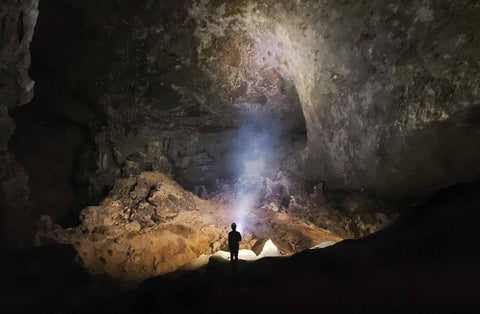Spotlight vs. floodlight — What exactly is a spotlight, and what distinguishes it from a floodlight? Understanding the unique traits of both lights helps you choose the suitable device for the tasks you need to complete.
The key to discerning between spotlights and floodlights lies in understanding the concept of candelas.
Candelas: What Are They?
Candela (CD) denotes the quantity of light a lighting device emits in a specific direction. This term is synonymous with "candlepower." The measurement of candlepower originates from when candles were the primary source of illumination.
One spotlight and floodlight candela is approximately equivalent to the light produced by a candle with specific dimensions. "Maximum Beam Candlepower" (MBCP) describes the maximum intensity of the focused light beam. It is emitted from the center of the lighting device and projected in a single direction.
In industrial settings, lumens and candelas measure the luminous efficacy of lighting devices. One candela is approximately equal to 12.57 lumens.
Lumens don’t account for the spread or divergence of emitted light from the device. In contrast, the candela value of a lighting device focuses primarily on a concentrated beam of light.
What Are Floodlights?

Before discussing the difference between floodlight and spotlight, it’s best to get to know them individually.
A floodlight is a light source characterized by its wide beam spread. Typically, it emits light with a beam spread ranging from approximately 90 to 120 degrees.
Floodlights produce non-directional illumination, resulting in soft, gradual shadows that gently fade when illuminating objects. Due to their broad beam angle, floodlights can illuminate larger areas effectively.
Floodlights are ideal for close-up tasks and indoor or outdoor situations requiring a wider field of view. This fact is especially true when you require comprehensive illumination during low-light conditions.
What Are Spotlights?
 A spotlight has a narrow beam spread, typically less than 45 degrees. Most spotlights have a beam angle no wider than 25 degrees, making them more concentrated than floodlights.
A spotlight has a narrow beam spread, typically less than 45 degrees. Most spotlights have a beam angle no wider than 25 degrees, making them more concentrated than floodlights.
This focused beam allows precise control over the direction of illumination, making spotlights ideal for highlighting specific areas or objects.
Differentiating a Floodlight and a Spotlight
Generally, a spotlight produces a focused beam, creating more of a "spot" of light rather than a broad "wash." Conversely, floodlight describes a light with a widespread beam, typically used to wash a wall with light.
As you tackle the difference between floodlights and spotlights, you’ll know that the former illuminates the entire scene within lighting range.
Conversely, spotlights produce a concentrated effect, allowing for precise illumination direction. High-quality spotlights can focus on specific objects.
Which is Right For You?
The decision between using a floodlight or spotlight depends on your specific requirements. Combining both types can enhance the overall illumination effect and add visual interest.
When shopping for a Spotlight, look for very bright lumens as well as very high candelas. This indicates that the light has a concentrated “spot” beam.
When looking for a Floodlight, look for similar bright lumens. However, instead of very high candelas, look for those numbers to be quite low compared to their spotlight counterpart.
Understanding spotlight vs. floodlight can help you identify the specific lighting requirements of your application. Let the pros at Fenix Lighting help you decide. Call us now or browse through our website for more information on what we can offer.


